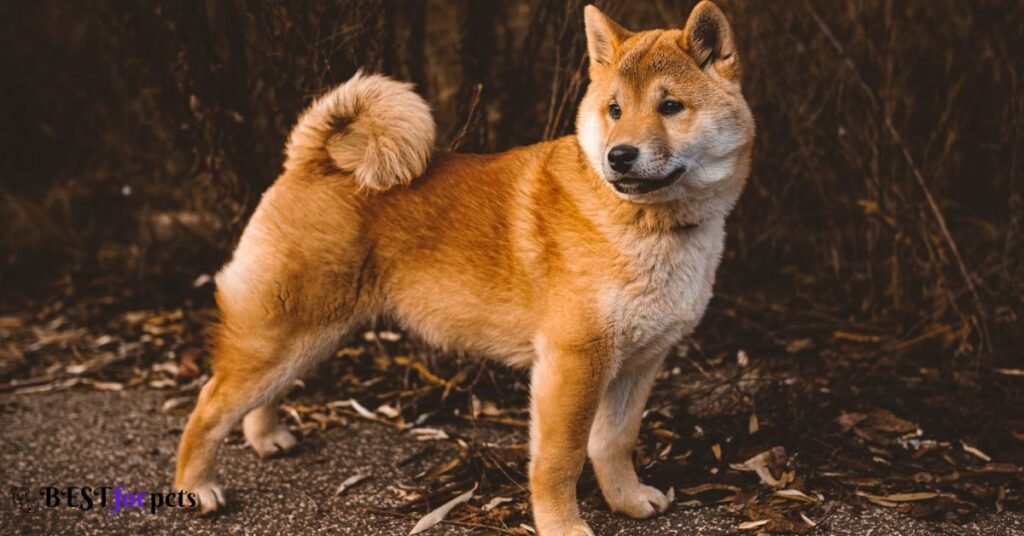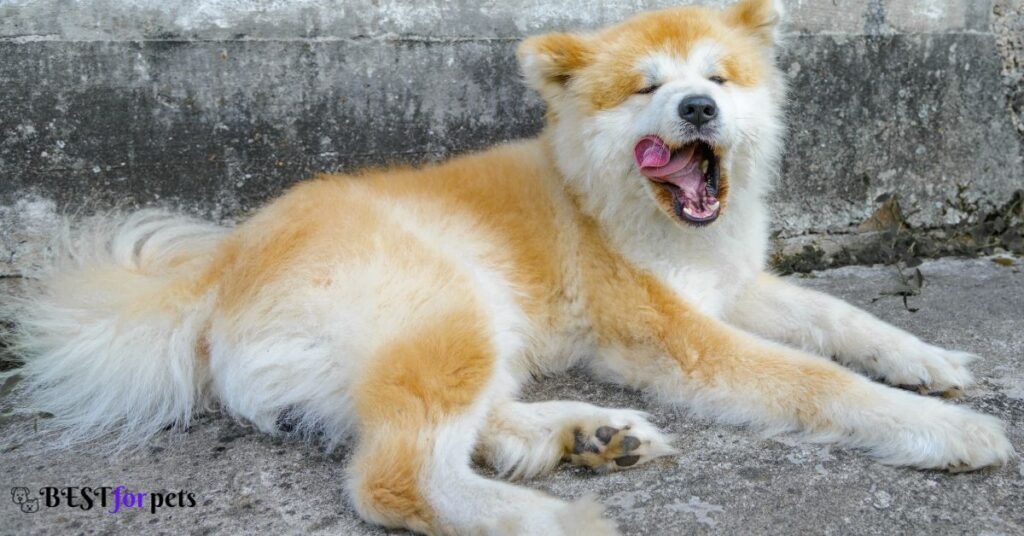Akita Vs Shiba Inu
Breed Overview: Akita vs Shiba inu
Akita: The Akita is a large and powerful dog breed originating from Japan. Known for its noble and dignified appearance, the Akita possesses a strong presence and a sturdy build.
This breed typically weighs between 70 to 130 pounds (32 to 59 kilograms) and stands about 24 to 28 inches (61 to 71 centimeters) tall at the shoulder. Akitas have a thick double coat that comes in various colors, including white, brindle, and several shades of red.
Shiba Inu: The Shiba Inu is a small to medium-sized dog breed native to Japan. It is the smallest among the six native Japanese breeds. Weighing between 17 to 23 pounds (7.7 to 10.4 kilograms) and standing approximately 13.5 to 16.5 inches (34 to 42 centimeters) tall, the Shiba Inu has a compact and well-muscled body. This breed’s coat is thick, plush, and comes in various colors, most commonly red, sesame, black and tan, and cream.


Temperament and Personality:Akita vs Shiba inu
Akita: Akitas are known for their loyalty, courage, and dignified nature. They are highly intelligent, independent, and often reserved around strangers. Akitas can be protective of their families, making them excellent watchdogs. However, proper socialization and training from an early age are crucial to ensure they develop into well-rounded companions. Akitas can be strong-willed, so consistent and firm training methods are essential.
Shiba Inu: Shiba Inus are often described as bold, alert, and spirited dogs. They are known for their independent nature and can sometimes be stubborn. While they are generally good-natured and affectionate with their families, Shiba Inus can be reserved and aloof with strangers.
Early socialization is vital to prevent behavioral issues. They are intelligent and have a strong prey drive, which can make recall training a challenge. Positive reinforcement training methods work best with this breed.
Akita vs Shiba inu : History and Origins
Akita and Shiba Inu are two popular dog breeds that originated in Japan. While they share some similarities, they have distinct histories and origins.
The Akita, also known as the Akita Inu, is a large and powerful breed that traces its roots back to the mountainous regions of northern Japan. The breed’s history can be traced back over 4,000 years. Initially, Akitas were used for hunting bears, boars, and deer. Later, they were employed as guard dogs and even as symbols of good health, happiness, and long life in Japanese folklore. Akitas gained recognition as a national treasure in Japan and were designated as a natural monument in 1931.
On the other hand, the Shiba Inu is a smaller breed that originated in Japan’s mountainous regions but has a more ancient lineage. The Shiba Inu’s origins can be traced back over 2,000 years, making it one of Japan’s oldest dog breeds. Originally, Shiba Inus were used for hunting small game, such as birds and rabbits. The breed’s name “Shiba Inu” translates to “brushwood dog” in reference to its hunting abilities in brushwood bushes.
Both breeds faced challenges during their histories. In the early 20th century, Japan’s dog population was greatly affected by distemper and World War II. Akitas, in particular, suffered a decline in numbers and were nearly extinct. However, after the war, efforts were made to restore the breed, and Akitas were crossbred with other Japanese breeds and even American Akitas.
Akita Vs Shiba Inu: Trainability
Akitas are known for their independent and strong-willed nature. They are intelligent dogs but can be stubborn and have a tendency to assert dominance if not properly trained and socialized from an early age. Akitas require consistent and firm training techniques, as they can be quite aloof and may not always respond well to harsh or forceful methods.
Positive reinforcement techniques, such as rewards-based training and consistent, patient guidance, tend to work best with Akitas. It is important to establish a clear leadership role and maintain consistency in training routines. Early socialization with other dogs, animals, and different environments is crucial to prevent aggression or territorial behavior.
On the other hand, Shiba Inus are also intelligent but have an independent and somewhat aloof nature. They have a strong sense of self and can be more challenging to train compared to some other breeds. Shiba Inus are known for their strong prey drive and may have a tendency to chase small animals.
They can be stubborn and may require a patient and consistent approach to training. Positive reinforcement techniques, such as treats and praise, work well with Shiba Inus. They respond better to training methods that are fun, engaging, and provide mental stimulation. However, it is important to note that Shiba Inus may not always be as obedient as some other breeds, and they may have a selective listening ability.
Akita Vs Shiba Inu: Adaptability
Akitas are generally less adaptable compared to Shiba Inus. They are a larger breed with a thick double coat, which makes them better suited for colder climates. Akitas can tolerate cold weather well and may struggle in hot and humid environments. Additionally, Akitas have a strong protective instinct and can be territorial, which may require careful management in multi-pet households or apartments.
They thrive in homes with a securely fenced yard that allows them to exercise and patrol their territory. Akitas also have a moderate energy level and require regular exercise to prevent boredom and destructive behaviors.
On the other hand, Shiba Inus are more adaptable to different living conditions. They are a smaller breed with a dense double coat that provides insulation in cold weather and helps them tolerate warmer climates as well. Shiba Inus can adapt well to apartment living if provided with sufficient exercise and mental stimulation. They have a higher energy level compared to Akitas and require regular exercise to prevent boredom and restlessness.
However, it is important to note that Shiba Inus have a strong prey drive and may have difficulty cohabitating with small animals or cats unless properly socialized from an early age.
Akita Vs Shiba Inu: Nutrition
Akitas are a large and muscular breed, and their nutritional requirements reflect their size and energy levels. They generally require a diet that is rich in high-quality protein to support their muscle development and maintenance. Akitas can benefit from a balanced diet that includes lean meats, such as chicken or beef, along with a variety of fruits, vegetables, and whole grains.
It is important to monitor their calorie intake to prevent obesity, as Akitas can be prone to weight gain. Feeding them in appropriate portion sizes and avoiding excessive treats is crucial.
Shiba Inus are smaller in size compared to Akitas, and their nutritional needs are also different. They require a diet that is specifically formulated for small to medium-sized breeds. Shiba Inus can thrive on a well-balanced diet that includes high-quality protein, healthy fats, and carbohydrates.
It is important to choose a dog food that meets their specific needs, taking into consideration their age, activity level, and any dietary restrictions they may have. Like Akitas, Shiba Inus should be fed in appropriate portion sizes to maintain a healthy weight.
Frequently Asked Questions
Are Akitas good with children?
Akitas can be good with children if they are properly trained, socialized, and introduced to children from an early age. However, due to their large size and protective nature, supervision and caution should always be exercised when they interact with children.
Are Shiba Inus good for first-time dog owners?
Shiba Inus can be challenging for first-time dog owners due to their independent and strong-willed nature. They require consistent and patient training, socialization, and a firm but gentle approach. Experienced dog owners or individuals willing to invest time and effort in training can successfully handle a Shiba Inu.
Do Akitas and Shiba Inus get along well with other pets?
Akitas and Shiba Inus have strong prey drives and can be wary of other animals, especially small ones. Proper socialization from an early age and careful introductions can help them get along with other pets. However, individual temperament and training play significant roles, and not all Akitas and Shiba Inus may be suitable for multi-pet households.
How much exercise do Akitas and Shiba Inus need?
Akitas are a moderate-energy breed and require daily exercise to prevent boredom and maintain their physical and mental well-being. They benefit from activities like brisk walks, play sessions, and mental stimulation. Shiba Inus have a higher energy level and require regular exercise, including walks, playtime, and opportunities to explore their surroundings.
Do Akitas and Shiba Inus shed a lot?
Both Akitas and Shiba Inus are known to shed. Akitas have a dense double coat and typically shed heavily twice a year. Regular grooming, including brushing to remove loose hair, can help manage their shedding. Shiba Inus have a thick double coat as well but generally shed less compared to Akitas. They also benefit from regular brushing to keep their coat healthy.
Are Akitas and Shiba Inus prone to any health issues?
Both Akitas and Shiba Inus can be prone to certain health issues. Akitas may be susceptible to hip dysplasia, progressive retinal atrophy (PRA), hypothyroidism, and autoimmune disorders. Shiba Inus can be prone to hip dysplasia, patellar luxation, allergies, and certain eye conditions. Responsible breeders and regular veterinary check-ups can help identify and manage potential health issues in these breeds.

